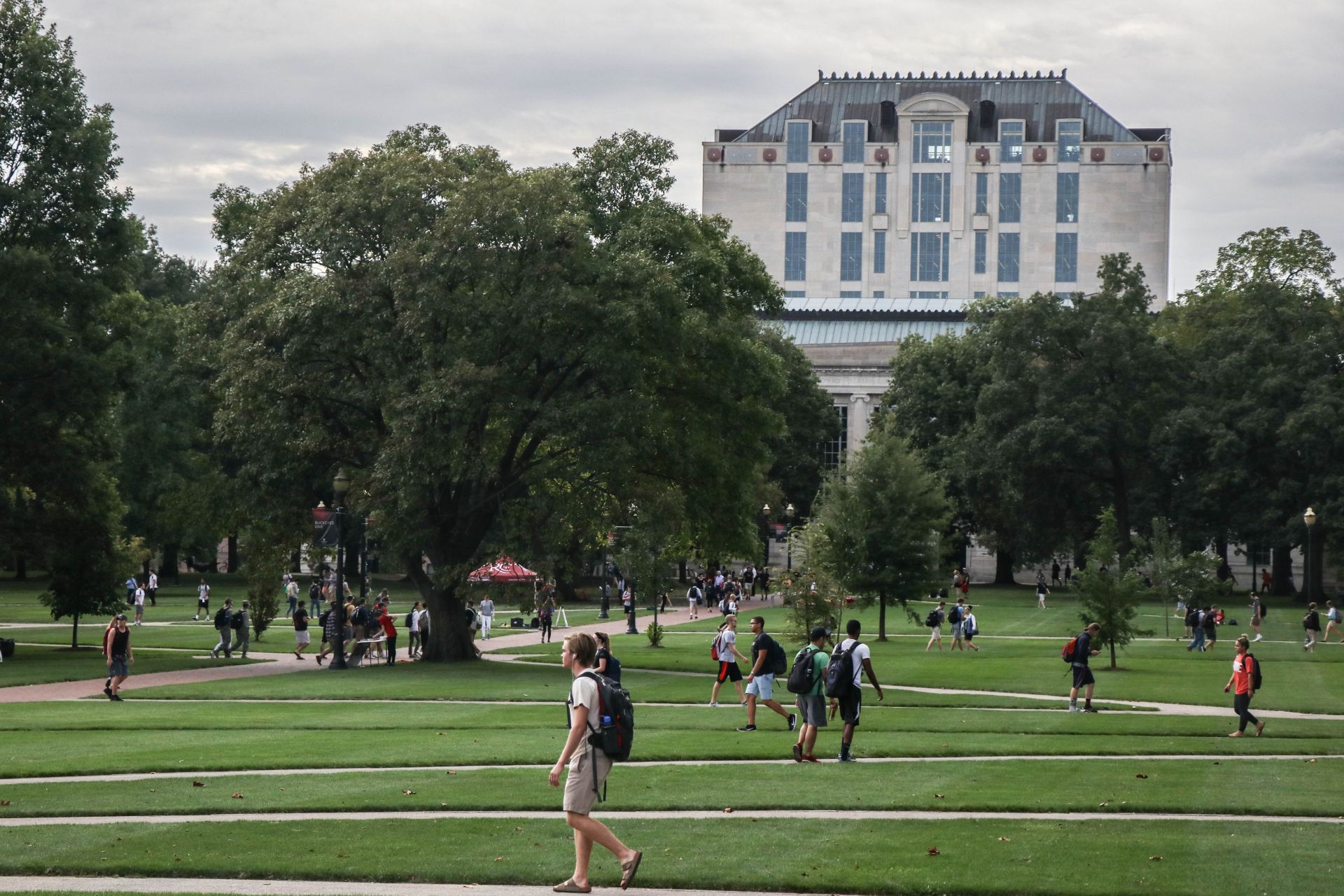
Students walk across The Oval. Credit: Jack Westerheide | Photo Editor
Ohio State is receiving double the number of applications for incoming freshmen than it received a decade ago and has increased its four-year and six-year graduation rates substantially over that time.
The figures provided the bulk of discussion in the Board of Trustees’ Academic Affairs and Student Life Committee meeting Thursday afternoon, with Board members focusing both on the successes the numbers indicate, as well as the challenges ahead to continually improve.
Ohio State processed 52,427 new student Columbus campus applications for Autumn 2017 enrollment. Ohio State processed 22,281 for Autumn 2007, meaning it received a 135.3 percent increase in applications in 10 years.
The increase in applications has allowed the university to be more selective about the students it enrolls, and average ACT scores of incoming freshman have gone up over that time, from 27 to 29.2.
The university is not eager to seek a further increase in the ACT average, however.
“There was a feeling that the investments that would be necessary to go from a 29 to a 30 would be substantial and they could take away from other priorities and they could have an impact on some of the access and diversity goals that we have at the university,” said Vern Granger, the interim vice president for strategic enrollment planning.
Ohio State’s four- and six-year graduation rates have increased in the last decade as well, from 46 percent to 62 percent, and from 71 percent to 83 percent, respectively.
The figures track the percentage of students who have graduated from Ohio State within four or six years of enrollment.
While some committee members acknowledged the four-year number seemed low, many were careful to point out that the graduation rates are in line with other schools.
“It turns out that [the 62 percent four-year graduation rate] is quite comparable to other universities,” said Elizabeth Hume, the vice provost for undergraduate studies and the dean of undergraduate education.
Bruce McPheron, the university’s executive Vice President and provost, said the administration believes there’s more of an interest in minors, double-majors, internships and study abroad that are causing students to graduate in more than four years.
One member of the discussion suggested the reality of many busy students’ lives might not allow them to earn a degree in four-year’s time.
“I think there is a cultural shift that will have to happen,” said Javaune Adams-Gaston, the senior vice president for student life. “I think it’s about students who have to work a lot. It’s about students who have had to step out of many things.”
In summation of the subject, Hume emphasized the improvements made of recent years, while claiming a need to still push forward to increase graduation rates.
“We are seeing successes, but there is still lots of work to be done in areas and we do have opportunities,” she said.
The discussion about admissions and graduation rates took 45 minutes of the nearly 90-minute meeting.
Before reconvening into the closed-door executive session portion of the meeting, the committee unanimously approved four proposals: one to appoint and reappoint faculty personnel, one to put in place a rule that non-tenure-track faculty be given different titles from tenure-track faculty, one to add a new degree program — a Bachelor of Science in Biomedical Science — to the College of Medicine and one to change the name of the Department of Plastic Surgery to the Department of Plastic and Reconstructive Surgery.
All four proposals will be voted on by the full Board of Trustees Friday morning.
Correction: An earlier version of this story improperly stated that the new Bachelor of Science in Biomedical Science was being added to the department of medicine. In fact, it is being added to the College of Medicine.


